
Barcelona with a Toddler – Arrival, Accommodation & First Impressions

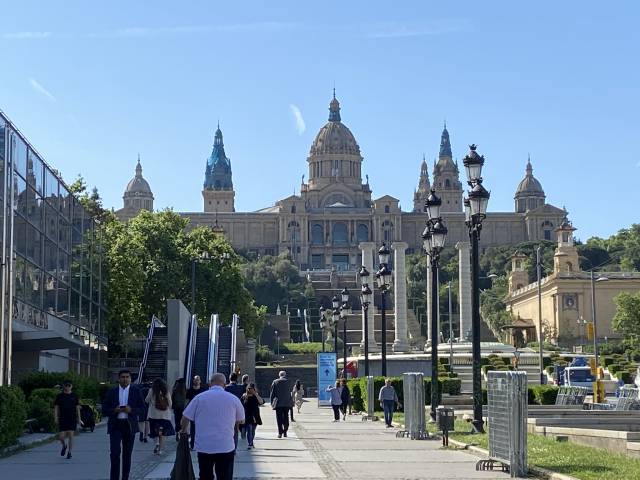
We spent our last full day in one of Barcelona’s most unique districts, Montjuïc, before wandering through the charming streets of the Old Town.
After our now-customary, delicious breakfast at a local bakery, we set off on foot from Plaça d’Espanya to reach Montjuïc Hill, which rises 185 meters above the harbor. This area is packed with attractions, as many of its buildings and parks were developed for the 1929 International Exposition and the 1992 Barcelona Olympics. With its castle, palace, Olympic stadium, various museums, and lush green spaces, Montjuïc offers enough to fill an entire day. At the very least, it’s worth dedicating half a day to fully appreciate its charm. We chose to explore this fascinating district during the first half of our day.
Plaça d’Espanya – A Key Landmark in Barcelona
We took the metro to Plaça d’Espanya, one of Barcelona’s busiest transport hubs. Carrying our little one in a baby carrier made the metro ride much more comfortable and convenient. The square was designed to impress visitors to the 1929 International Exposition, and it certainly achieved its goal, becoming a grand gateway to the event.
Our first stop was the 33-meter-tall fountain at the heart of the square, a symbolic masterpiece representing Spain’s great rivers and embodying themes of wholeness, health, and heroism.
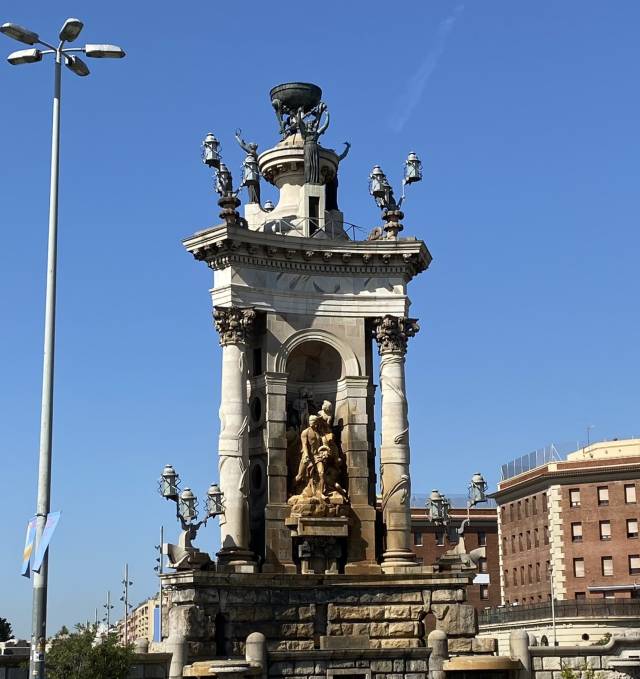
Another highlight of the square is Arenas de Barcelona, originally a bullfighting arena. It was nearly demolished but was ultimately preserved, with its outer façade transformed into a modern shopping mall. At the top, there’s a 360-degree panoramic terrace, offering one of the best views of the city. While we didn’t go up this time, it’s a great spot to admire the stunning sight of the grand palace opposite.
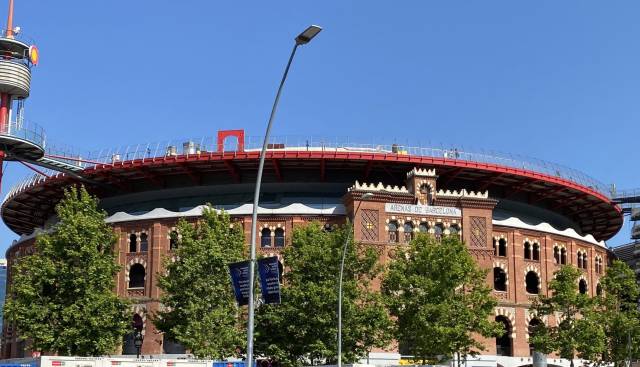
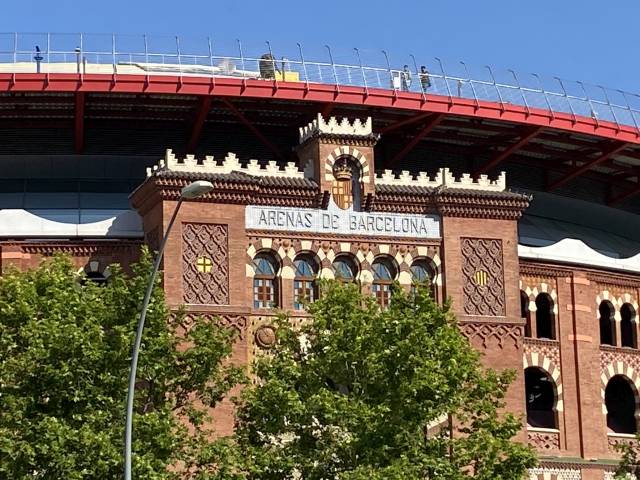
Exploring Montjuïc – Breathtaking Views and Historic Landmarks
Leaving Plaça d’Espanya, we passed by the two Venetian-style towers, reminiscent of St. Mark’s Square in Venice, which mark the entrance to the old exhibition grounds. The view from here is spectacular, with the majestic Palau Nacional (National Palace) rising in the background, standing at the base of the Magic Fountain (Font Màgica). The whole scene was simply breathtaking—one of Barcelona’s most impressive sights!
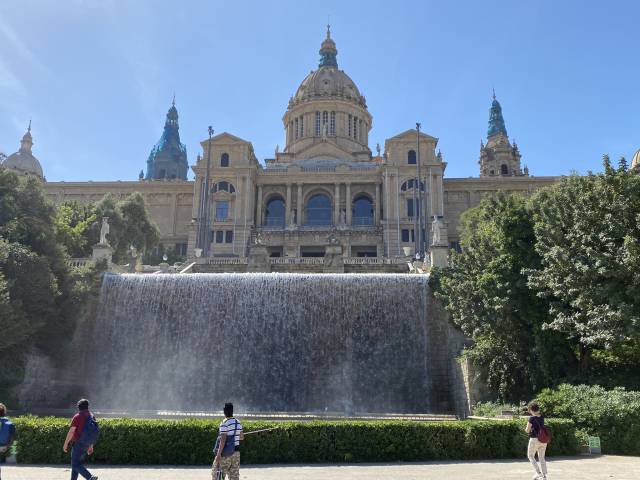
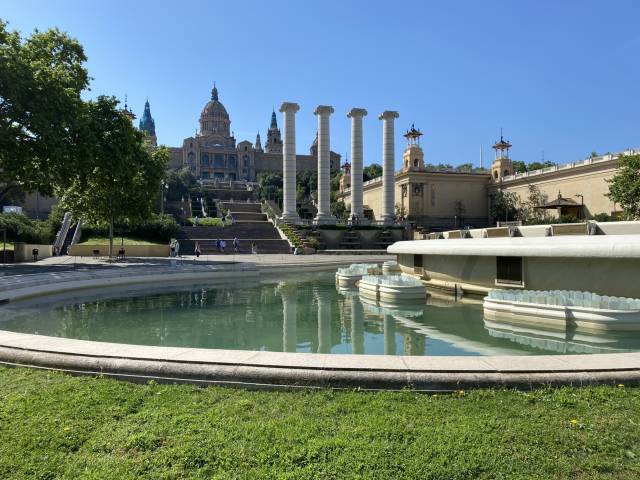
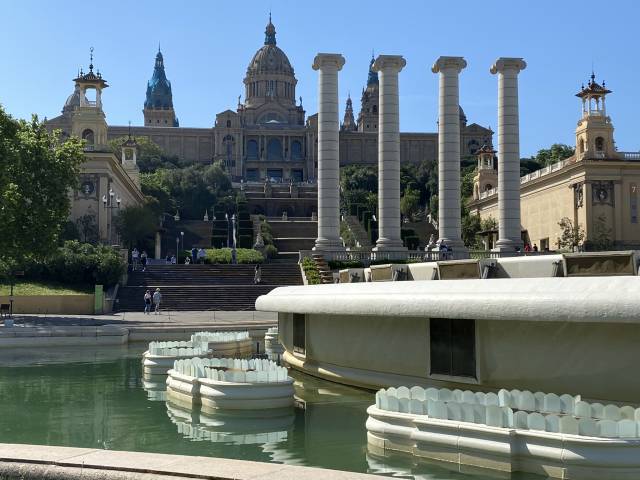
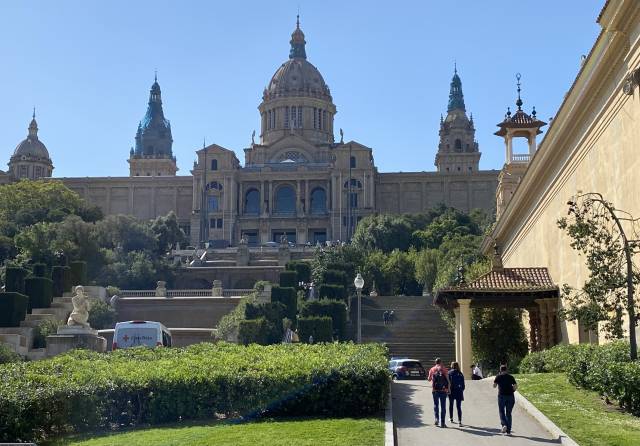
By this time, our daughter was contentedly observing the world from her stroller as we strolled along the wide, elegant promenade leading to the Magic Fountain. Built for the 1929 International Exposition, this decorative fountain is famous for its evening light and music shows, where water jets dance in harmony with classical and modern tunes, illuminated by colorful lights.
For those interested in seeing this spectacular show, it’s worth checking the schedule in advance:
Magic Fountain Show Times
Although it was tempting, we had to skip the show this time to stick to our little one’s evening routine. But we’re sure that on our next visit, it’ll be at the top of our list!
Climbing Montjuïc – Steps, Stunning Views, and Olympic Legacy
After enjoying the sights around the National Palace, we started our walk up the steps leading to the higher parts of Montjuïc. This time, we used the baby carrier again, making the climb easier and faster. However, for those who prefer to avoid stairs, escalators are available to reach the top.
We took our time, enjoying the scenic ascent, and made a refreshing stop at Bar Les Cascades, where we savored a delicious coffee and some ice cream. As we climbed higher, the view of Barcelona kept unfolding before us, revealing even more of the city’s beauty. A big plus for this café: they have a changing table, which is always a lifesaver when traveling with a toddler!
Feeling recharged, we continued our way up until we reached the Palau Nacional, a monumental building that once served as the main venue for the 1929 International Exposition and now houses a remarkable collection of Catalan art. We took a moment to sit on its grand staircase, simply enjoying the panoramic view of the city below.
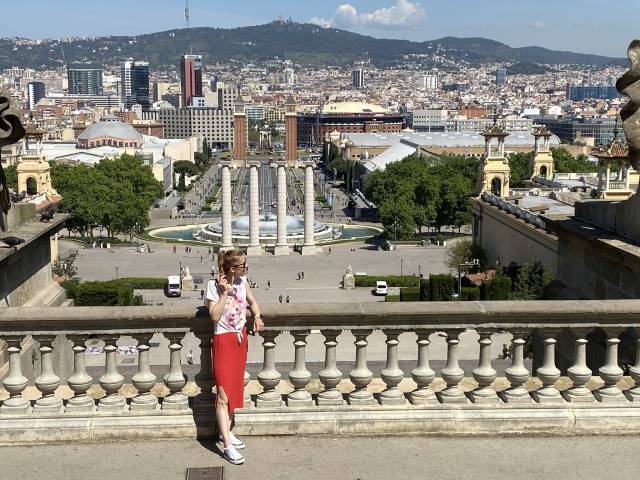
The Olympic Legacy – Barcelona 1992
Our next stop was the Olympic Stadium and surrounding sports facilities. The 1992 Barcelona Olympics were a major milestone in the city’s history. While the Olympic Stadium was originally built in 1929 for the Expo, it was fully renovated for the Games. It hosted the opening and closing ceremonies, along with many unforgettable sporting events.
To be honest, I expected a bit more from the Olympic site—it didn’t quite have the captivating atmosphere I had hoped for, but that’s just a personal impression. Still, it was fascinating to see how important this area was during the Olympics.
Nearby stands the striking Torre Calatrava, a 136-meter-high white tower symbolizing an athlete holding the Olympic flame. As part of the Olympic Ring (Anella Olímpica), it was a key landmark during the Games and remains an iconic structure in Barcelona’s skyline.
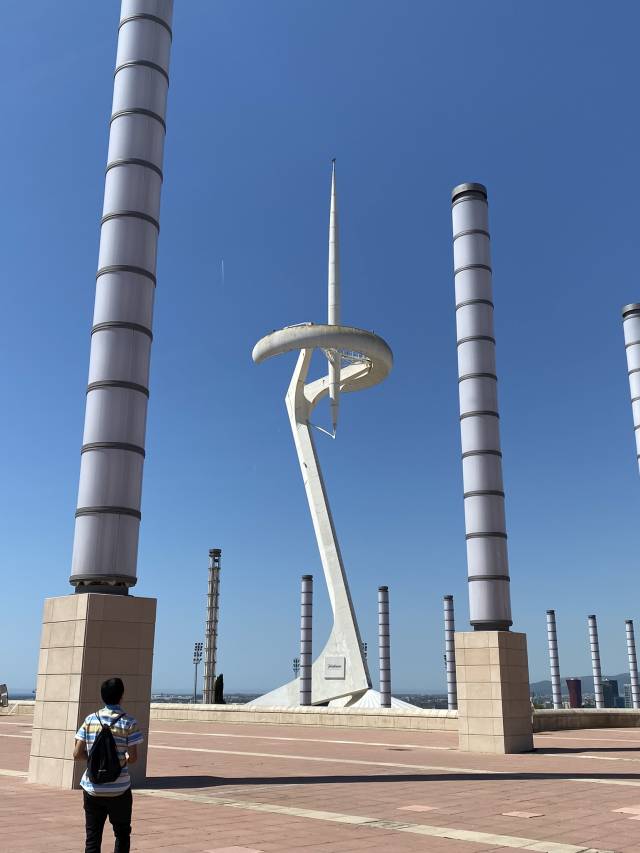
The Peak of Montjuïc & Taking the Cable Car to the Harbor
At the highest point of Montjuïc sits the Castell de Montjuïc, a former military fortress that once played a strategic role in Barcelona’s defense. From here, you get breathtaking views of the sea and the city. We decided to skip the visit this time, as we wanted to explore the Old Town and Liny had just fallen asleep in the stroller.
To descend, we headed toward the Telefèric de Montjuïc station, about a 10-minute walk from the Olympic Stadium. On the way, we stopped for a meal at Salts Terrassa Bar Montjuïc, a fantastic spot with a stunning view of Barcelona. The restaurant is set in the old Olympic diving tower and serves delicious food and drinks—perfect for a light snack or refreshment. Their menu features a variety of tapas, pizzas, crepes, and drinks, so there’s something for everyone. Bonus points: they have clean restrooms and a changing station, which is always a plus when traveling with a toddler!
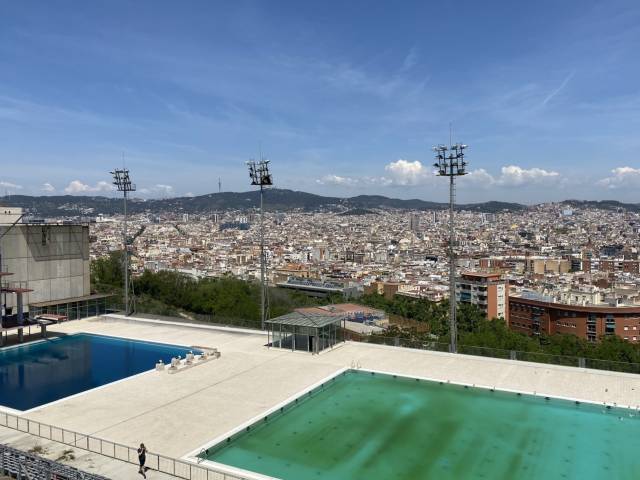
As we enjoyed our sandwiches and coffee, Liny woke up, had a good meal, and was ready to continue the adventure.
The Montjuïc Cable Car – A Unique Ride Over Barcelona
The Telefèric de Montjuïc is a scenic cable car that runs from Miramar Station down to the port, ending at the San Sebastián Tower. We arrived without pre-booked tickets but were lucky—there was no queue, so we quickly bought our tickets:
Check the latest schedule and prices here:
telefericodebarcelona.com/en/schedulestelefericodel-puerto/
Before boarding, we took a short walk to the Mirador de l’Alcalde, a panoramic terrace offering spectacular views over the Barcelona harbor. It was just a short stroll from the cable car station and well worth the stop.
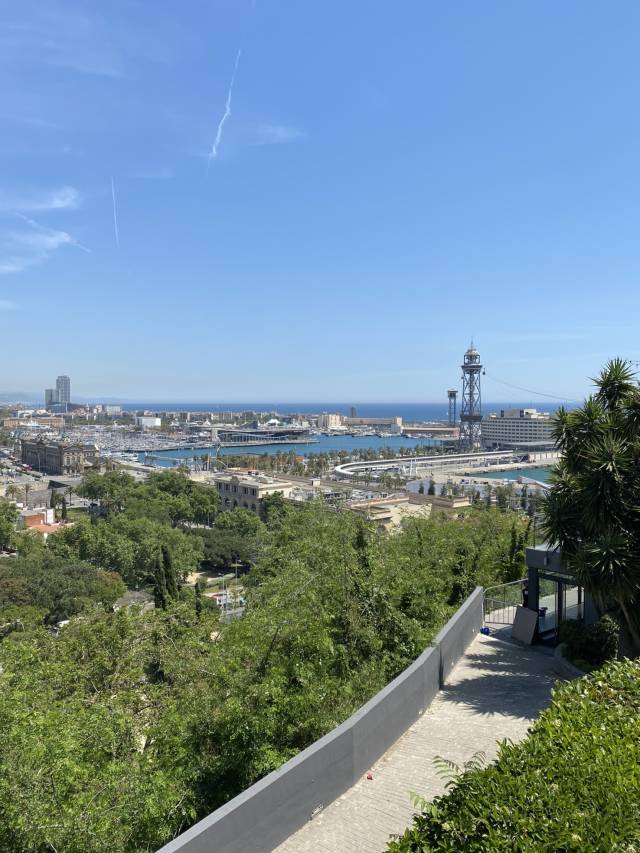
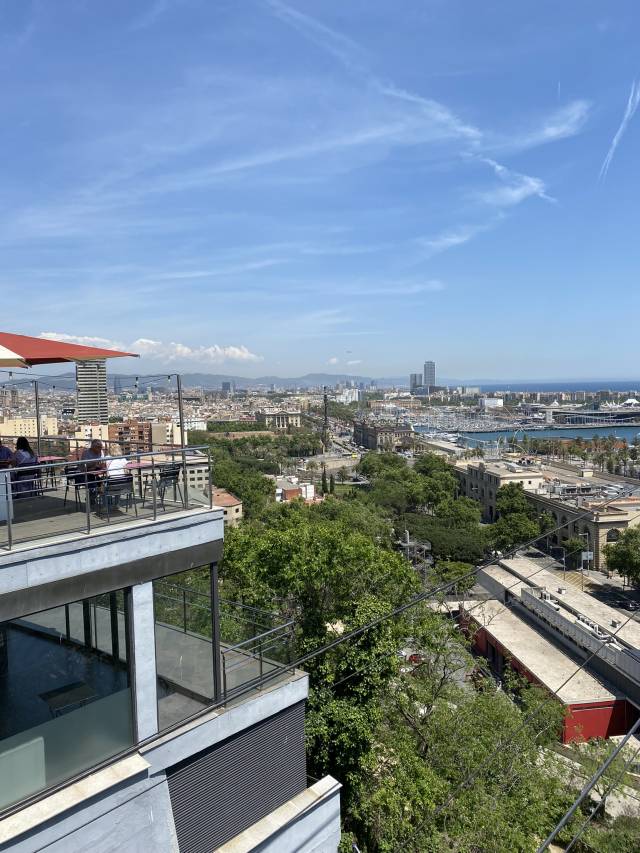




The Telefèric de Montjuïc has been operating since 1970. Originally an open-air chairlift, it was upgraded between 2004 and 2007 into the modern, enclosed cabins used today. There are 55 cabins, each accommodating up to eight passengers, and two are fully accessible for wheelchairs.
Since it wasn’t crowded, we didn’t need to fold up the stroller, so Liny could comfortably ride inside. However, during peak hours, staff may ask passengers to fold strollers to make room for others.
As we descended, we were mesmerized by the breathtaking views of Barcelona’s coastline. It was an incredible experience—another unforgettable memory added to our trip!
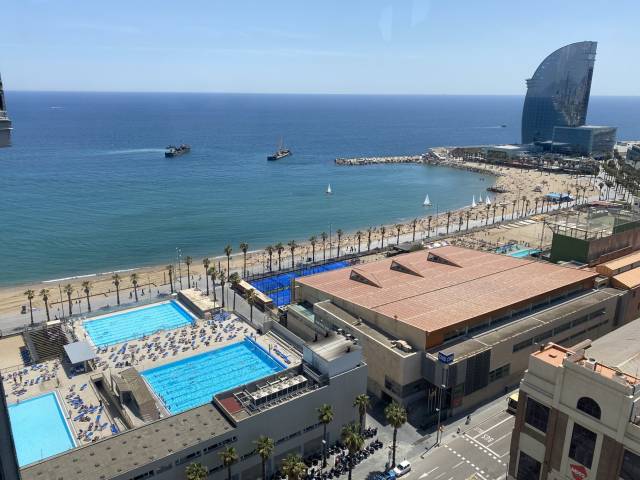

Barcelona with a Toddler – Arrival, Accommodation & First Impressions
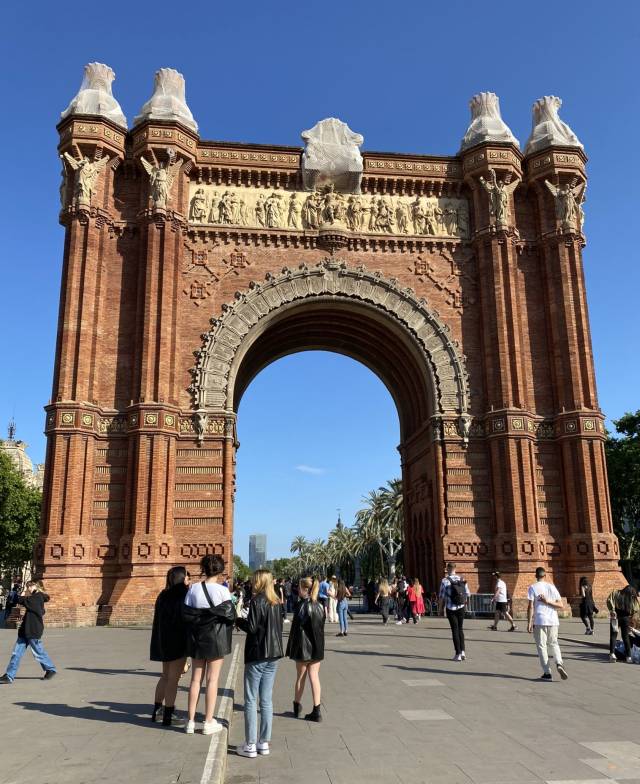
Barcelona – Day 1: Exploring Ciutadella Park, El Born & Barceloneta

Barcelona – Day 2: In Gaudí’s Footsteps – Exploring the Sagrada Família, Park Güell & More

Barcelona – Day 3 – Part 2: An Afternoon in the Gothic Quarter (Barcelona’s Old Town)
@ Copyright - WanderingKite | All rights reserved! | Privacy Policy